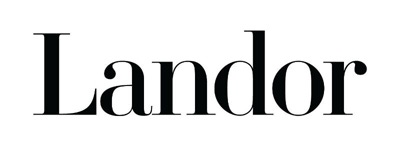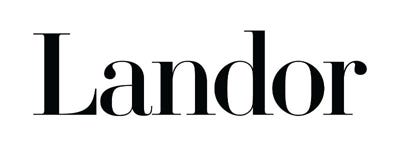Top brand trends for 2014 predicted
February 13, 2014


Landor Associates
In with the old and out with the new-the top brand trends of 2014 may surprise you. Social media becomes "old school" and the commitment to "second life" packaging intensifies. These are just some of the coming year's predictions released by Landor Associates, the global strategic brand consulting and design firm.
Hayes Roth, chief marketing officer of Landor, comments, "Our team of experts selected 2014's top trends by looking at the behavior and attitudes of high-profile demographics, especially the Millennials and Gen Y'ers, who will outspend baby boomers by 2017. Assessing changes and innovations in leading industries like technology and health care, our specialists identified the most important drivers behind these insights. Health and fitness, individual empowerment, and social responsibility emerge as key themes."
Landor's top 10 brand trends for 2014 are:
1. Wearable tech is not just for gadget heads. Health-oriented consumers, and those who use their social media networks for inspiration and support, embrace technology that would normally appeal to only geeks and early adopters. Wearable tech will help people create, track, and achieve their activity and weight management goals in ways that were previously the domain of costly personal trainers. A circuit "tattoo" that delivers real-time data to physicians? T-shirts that measure body temperature and vital signs? The market for wearable and mobile health-device technology was worth $2 billion in 2011 and is projected to reach $6 billion by 2016. Brands to watch include Avery Dennison (Metria Wearable Sensor), AiQ (smart textiles), and Zephyr Technology (BioHarness BT).
2. Obamacare opens the door for greater and healthier consumer empowerment. U.S. healthcare reform is causing a shift in responsibility. Consumers will be more empowered as a result of their increased financial responsibility, which in turn creates more involvement in their health care choices. In particular, people will be more interested in eating healthy-giving consumer packaged goods markets the opportunity to help. Consumer-friendly nutritional labeling and packaging will be used as a powerful marketing tool.
3. Brands become "enablers" of public service. With governments under financial pressure, brands will put their name on more projects that support the public good, rather than stadiums or venues. Citibank's New York City bike program gives city-goers a healthier, environmentally friendly mode of transportation.
4. Man as "wife." There are more reversed roles in households and fewer gender-specific brand plays as we shift to an era of gender equilibrium. Women aren't the only consumers targeted for skin care products and baby accessories. Examples include Dove Men+Care, a new skin care line for men, and DadGear, a collection of masculine bags and accessories designed specifically for dads-which also include compartments for diapers.
5. "Second life" packaging becomes first priority. Doing good for the environment still means doing good at the cash register for many brands, so it's no surprise that packaging with a dual use resonates with the environmentally conscious and the budget conscious alike by reducing waste and giving the customer two products in one. A Dutch company sells light-bulbs in whose packaging turns into a lampshade. Lu, the French biscuit brand, has introduced a box that becomes a children's toy when refolded.
6. "Clean slate" brands clean up. Consumers are rushing to clean-slate brands, or brands without heritage and history. These brands appear newer, better, faster, cleaner, more open and responsive to consumers versus their old, slow, and untrustworthy brands of the past. This trend is seen primarily in developed countries as a result of the lack of trust in big business right now. W Motors, a new luxury car brand in the Middle East, is booming even without history behind it. A South African social messaging app, 2go, has double the number of users compared to Facebook.
7. "What happens at Yale stays at Yale." Destination branding goes beyond tourism to universities, colleges, and high schools to spur recruitment efforts, attract money, and drive campus culture.
8. Luxury brands are back and bigger than ever. Purchasers are gender neutral, and more women will be buying their own high-end "rewards" from cars to jewelry. Luxury brands are turning their attention to the boomer woman and extending lines to reach this high-potential consumer. Surprisingly, Millennials will be the most important consumer in this category by 2016. Masculine brands like Johnnie Walker are now targeting women, appealing to contemporary lifestyles, and having a unisex tone without feminizing the category.
9. Social media becomes "old school." Social engagement transitions from being a shiny, new object to being a customer service and marketing necessity. With the rise of visual content on social media, brands can increase engagement and inspire a community of sharing. Social listening allows brands to assess and identify reach.
10. Brand is as brand does. What brands truly stand for, not just what they say, will be the deciding factor in
increased sales. There will be an intensified focus on values, beliefs, and corporate social responsibility. Going well beyond the functional and emotional benefits of products and services, corporate culture will determine brand loyalty. Like Southwest Airlines, that recruits "happy" people, if you recruit the type of people you want, you'll get the work and brand experience you want.
For more in-depth 2014 brand and industry trends information, please visit http://landor.com/#!/talk/articles-publications/articles/landor%E2%80%99s-2014-trends-forecast/
Source: Landor Associates
.
About the Author(s)
You May Also Like


